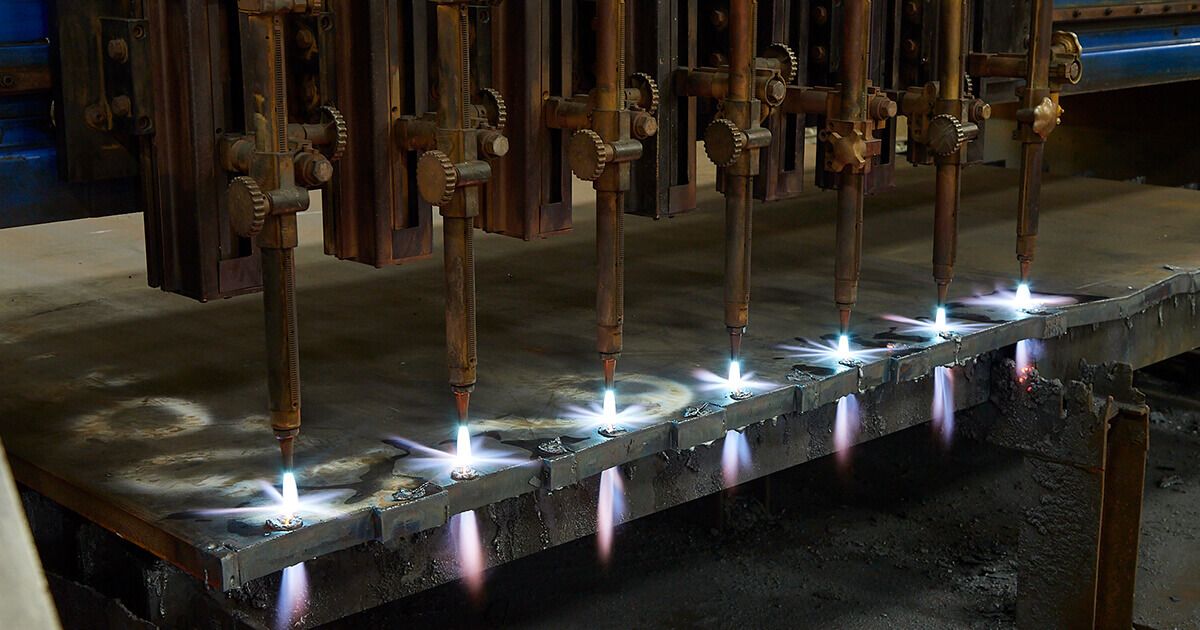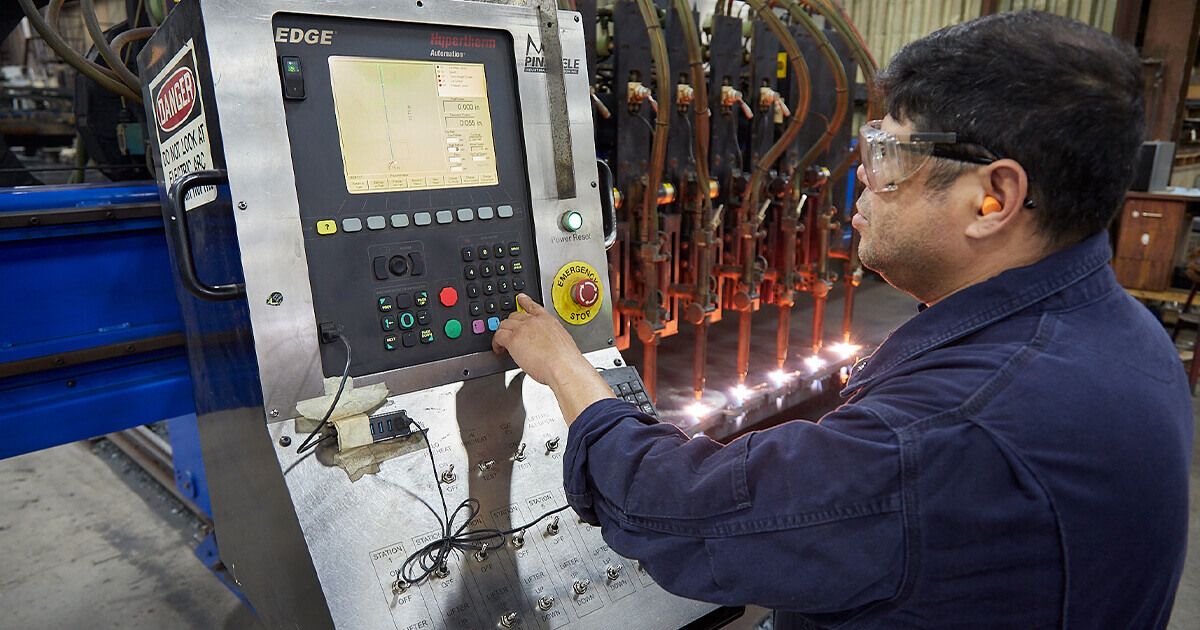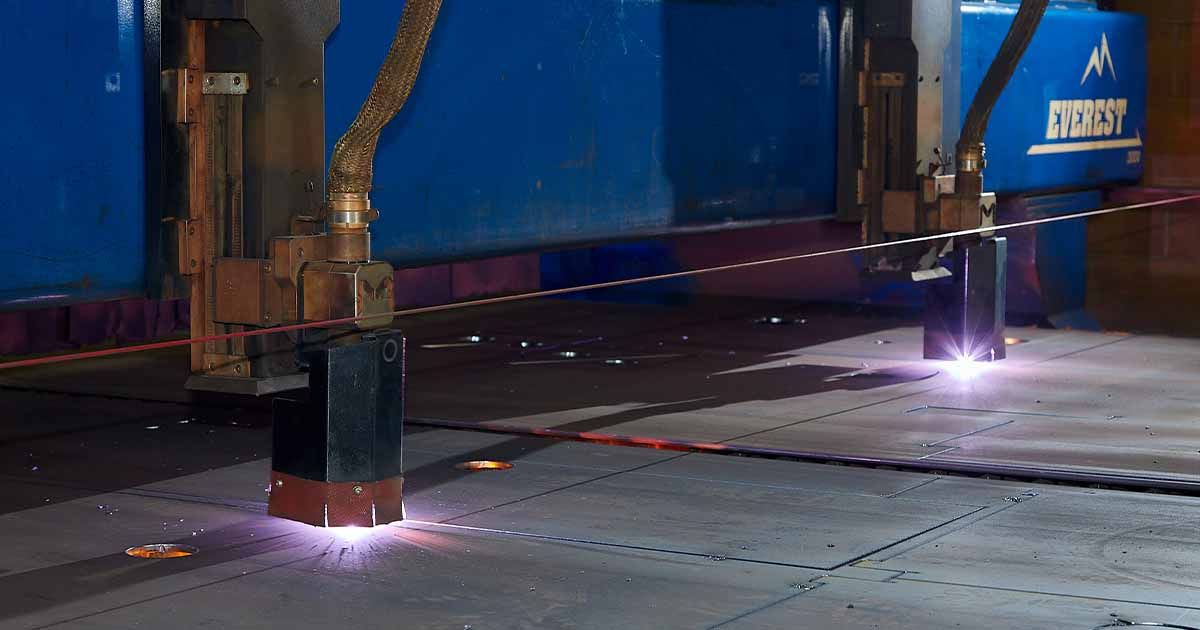
We collect basic website visitor information on this website and store it in cookies. We also utilize Google Analytics to track page view information to assist us in improving our website.
If you’re passionate about metal cutting or just keen to learn more, you’ve landed in the right place.
For over 38 years, Amber Steel has been at the forefront of metal cutting services, specializing in laser cutting, flame cutting, and plasma cutting. Our expertise has carved a niche in this cutting-edge industry, delivering precision and excellence across industrial projects big and small.
In our blog, we’ll share a mix of useful tips, innovative applications, our thoughts on sustainability in steel cutting, and more. Expect stories from the cutting floor, insights into how our processes can streamline projects across industries, and a few lessons we’ve learned along the way.
While we keep some of our trade secrets under wraps, this blog is designed to offer valuable nuggets of wisdom that you simply won't find anywhere else. Whether you’re a professional in the industry or someone fascinated by the possibilities of metal cutting, you'll find something of value here.
So, stick with us as we delve into the finer points of metal work. We’re glad to share our insights and lead discussions that matter to our industry.
How precision metal cutting propels the aerospace industry, from constructing lighter frames to enhancing aerodynamics.
The role of advanced metal cutting in automotive manufacturing, driving innovations in vehicle design and efficiency.
All about the robust and versatile process of flame cutting, ideal for tackling thicker metals with precision and ease.
Discover the art of crafting metal furniture, where cutting techniques meet design to create both functional and aesthetic pieces.
A behind-the-scenes look at the mechanics of metal cutting technologies and the science that makes them tick.
Laser cutting is where extreme precision meets efficiency, allowing for intricate designs and clean finishes.
The critical role of precise steel cutting in developing reliable and intricate medical devices.
How steel cutting supports the oil and gas industry with components that withstand extreme environments and pressures.
Known for its speed and versatility, plasma cutting slices through conductive metals with hot plasma.
Safety first! Tips and insights on maintaining a safe environment while handling powerful metal cutting equipment.
The backbone of construction, where steel fabrication and cutting technologies create frameworks that shape skylines.
Sustainability
A look at sustainability in metal cutting, focusing on practices that reduce waste and conserve energy to protect our planet.

All industrial projects have one thing in common: they necessitate a significant financial investment.
Even if, hypothetically, the upfront costs of shipbuilding or construction ventures (for example) are relatively frugal compared to industry standards, the dollar amounts involved would still be nothing to scoff at.
For instance, the cost range to build an industrial facility can jump to $180 per square foot and beyond, depending on complexity.
Modern cruise ships cost up to $900 million on average to build. On the lower end, it’s $500 million.
These investments can seem daunting, even when you’ve made financially savvy decisions. However, these projects often yield returns far exceeding those upfront costs — provided both strategy and execution are sound.
Part of sound strategy and execution is ensuring all facets of these projects optimize mechanical and financial efficiency.
On the above note, metal fabrication and steel cutting are crucial in heavy industrial projects, from shipbuilding and construction to precision engineering and aerospace. It’s a foundational component ensuring robust stability and reliability — responsible for providing the bones of all structures.
This brings us to flame cutting, which is aimed at the most robust industrial metals and materials.
With flame cutting, mechanical efficiency is at the forefront, requiring only one pass to slice through 270mm-thick steel. There’s also the benefit of cost-effectiveness. Its economic implementation of gas and oxygen makes it ideal for many projects.
There’s a caveat with flame cutting, though — that being quality control.
Not all flame-cutting services are created equal, and the margin for error in heavy industrial applications is virtually non-existent. You can’t afford low-quality work on your projects.
At Amber Steel, our flame-cutting services are second to none. Our expert technicians have mastered their craft, and our technology is state-of-the-art.
These benefits combine to ensure the work is completed efficiently, cost-effectively, and of the highest quality. We employ a consultative approach centered around your needs as a client, tailoring our steel fabrication solution to what will most benefit your project and budget.
We’ll open this section with a disclaimer: flame cutting has specific applications and limitations, typically beginning and ending with thick, heavy-duty metals.
Using flame cutting for thin metals in situations calling for high levels of precision won’t generate the desired results.
Thus, the prerequisite for quality control is ensuring flame cutting suits your project.
When you apply flame cutting in the incorrect scenario, all the other quality control measures in the world mean nothing because the work is doomed to disappointment. The method and technicians involved aren’t being set up for success.
Below, we’ll discuss the factors in choosing the correct cutting method, your first step in ensuring quality control.
Thin metals are not suited to flame-cutting — waterjet and hand-cutting methods are more suited to such projects.
Conversely, the robustness of flame cutting is far more suited to thicker metals (although, depending on other factors, you might be better off choosing plasma cutting).
Aluminum is a softer metal, typically better suited to abrasive methods and hand tools. Alternatively, low alloy steels, cast irons, and carbon steel respond best to flame cutting.
Weigh your metal type's hardness, thickness, and conductivity before determining the best flame-cutting method for your project.
In many aerospace applications, minimal distortion and high accuracy are paramount — in which case, flame cutting won’t fit.
Construction work offers more wiggle room with accuracy-based needs. You don’t need to be ultra-precise, often making flame cutting the ideal choice for these projects (in no small part due to its cost efficiency).
Some metals demand a high-cost cutting solution — otherwise, the job won’t be done correctly.
However, many projects involve materials suited to more cost-effective and budget-friendly solutions like flame cutting.
Overspending on a steel-cutting solution might yield an excellent final product but in a financially damaging fashion. Quality control is rendered useless if you’re getting raked over the coals because you’ve invested in a service that devours your budget when you could’ve chosen something more affordable that would’ve delivered equal results.
Manual and laser cutting are more suited to low-volume custom work.
However, robust high-volume jobs with thick steels—calling for fast turnaround times — will benefit from the speed and efficiency of flame cutting.
These factors can all be complicated to weigh on your own. So, consult with an industry expert who fully grasps your project's scope, materials, and spending limitations before deciding whether flame cutting fits your project.
If flame cutting is the ideal choice, the rest of the quality control measures we discuss will come into play.
Here are the pivotal benefits of choosing flame-cutting services for your project:
These are significant benefits that can bolster a given project. Yet, everyone can fly out the window without the appropriate quality control measures.
Quality control must be one of the top priorities of your flame-cutting service provider.
When your steel-cutting partner is rigorous about ensuring the utmost quality, they maximize the benefits and neutralize potential pitfalls.

Safety is crucial for the types of construction projects calling for flame-cutting services.
First and foremost is the human element of keeping workers safe. You don’t want anybody’s well-being at risk on a job site.
There are also legal and financial ramifications when someone gets hurt, damaging your reputation and bottom line.
On the above notes, flame-cutting machines possess high-temperature flames and involve combustible gases. Protective gear, adequate ventilation, and safety protocol adherence are vital.
When these factors aren’t managed properly, it puts workers at risk. Safety flies out the window.
Furthermore, flame-cutting service providers who don’t prioritize safety are telling you a lot about the rest of their quality control practices. The well-being of labourers and technicians doesn’t matter to such a company. Then, they probably don’t care too much about the quality of their final product, either.
The value of quality control can’t be overstated as it pertains to flame cutting.
Investing in a flame-cutting service with rigorous quality control measures ensures optimal value for dollars spent and a top-notch final product.
Still, it’s worth asking: What are the parameters of “quality” in relation to flame cutting? We’ll answer in the bullet points below:
These are critical factors in ensuring high-quality results from your flame-cutting service provider. Industry leaders will stop at nothing to ensure you get nothing but the best. They’ll be rigorous about quality control measures to ensure each cut follows the parameters detailed above.
Investing in a partnership with a steel-cutting service provider is a significant decision for your project.
Your choice of who to work with will depend on your vetting through prospective service providers and third parties, determining who best fits your needs.
Due diligence will be your guide. This means looking up online reviews, requesting references and portfolios of work from prospective partners, and seeking testimonials.
Time might be of the essence to get your project underway, but your choice in flame-cutter shouldn’t be rushed.
Find out how prospective partners will ensure quality. Investigate if they’re committed to offering you the most value and providing the best results for your project or merely trying to sell you something.
At Amber Steel, our clients and the needs of their projects come first.
Speak with us as a prospect, and we’ll provide expertise and insights that inform you of the quality of our work and the best ways to proceed with what you’re doing.
Contact us today If you’re seeking flame, plasma, or laser-cutting services and wish to consult with one of the industry’s foremost leaders.

Plasma cutting is a game-changer in industries like automotive manufacturing, metal fabrication, and construction, where precision is everything. Whether you're creating parts for the next big car model or putting together pieces for a new building, getting those clean cuts and avoiding warping is key.
But here's the thing: when you decide to go for plasma cutting, you're putting your money on the line. You want to make sure you're getting top-notch work. No one wants to see their materials go to waste because the edges aren't clean enough or the metal is twisted out of shape.
That's where we come in. We're all about providing plasma cutting services that hit the mark every time — clean edges, no distortion, just the way you need it.
Now, the nuts-and-bolts cutting of the matter is out of your hands. You’re hiring someone else to do it for you, meaning the techniques and technologies don’t apply directly to you.
In other words, you need someone you trust to complete the job correctly. You also require the criteria for finding such a service provider.
So today, we want to discuss how you can ensure the plasma-cutting service provider you partner with achieves clean cuts and minimal distortion in steel.
We can tell you with the utmost confidence how Amber Steel works with clients like you (e.g., in automotive manufacturing, metal fabrication, and construction) to deliver the results you seek. Our plasma-cutting services cater to your project’s needs, applying our solutions to your specifications.
The team at Amber is highly skilled and expertly trained to deliver precise cuts with minimal distortion and clean edges.
Contact us today to learn more about our plasma-cutting services and how we can optimize your project. Or, read below as we discuss how you can ensure you hire a plasma-cutting service provider who can deliver the precise final product you demand (and deserve).
No tool in the world can make up for a lack of skill. The plasma-cutting service provider most suited to your project should have undeniable technical expertise that you can count on.
However, there’s no denying that the tools play a part as well. Those with the higher tier of equipment will be able to execute superior cuts.
Here’s a list of topics to discuss with a plasma-cutting service provider to ensure they’re working with machinery and technology that can give you the results your project demands:
As you’re not a plasma-cutting technician, it can be hard to know whether an industry pro is following best practices.
Still, you can discuss the techniques below with potential service providers to ensure their cuts are precise, minimize distortion, and have clean edges. Their methods might differ from what’s laid out below, but they’ll offer insights into their process, further building trust:
Swirling rings, nozzles, retaining caps, shield caps, and electrodes are all plasma-cutting torch consumables.
Discuss with prospective plasma-cutting service providers whether they regularly inspect these consumables, as it’s a vital element of making quality cuts.
Industry experts will prioritize the condition of their consumables, replacing their tip holes if they’re covered in spatter or irregular in any way. They’ll also discard the electrode if it develops a pit.
Excessive moisture, high thickness levels, and lackadaisical technique can all adversely impact consumables, lessening cut quality.
A plasma-cutting service provider understands the delicate balance of speed and quality.
With thicker materials, they’ll rigorously monitor their travel pace with clean, precise cuts in mind. They’ll also adjust the amperage to lower for thinner material and higher for thicker material.
Plasma-cutting experts will find the correct speed and ensure a 15–20-degree plasma arc exit angle opposite the travel direction.
When moving too slowly, it will go straight down. If the technician moves too fast, it will spray back.
Heat and speed must also be balanced by your plasma-cutting service provider during the cutting process.
Doing so will prevent metal surface distortion and reduce rubbish on the bottom of the cut. When the heat-speed combination is optimized, distortion won’t be a factor. Also, there will be a minimal need for post-cut rework or grinding.
The best in the business will prioritize control as they determine how much speed should be applied.
Plasma cutting steel with clean edges and minimal distortion is a complex notion for many prospective clients — like you — for one reason: Much of the process is out of your hands.
You aren’t cutting the steel yourself because it doesn’t fall within your area of expertise. You’re relying on someone else to get the job done right. Thus, you can only do so much to impact the cut quality.
The information in this article has provided you with a set of criteria to watch for—this will be crucial in deciphering whether the company you’ve hired is up to the challenge.
We’ll never doubt the value of learning about your investments. Knowing what yields clean, precise plasma cuts will give you a leg up. Nonetheless, the fact remains: You can’t complete those clean cuts yourself.
When you partner with a service provider like Amber Steel, you’ll have someone handling your plasma-cutting needs with an industry-leading track record for optimal results and satisfied clients.
We work within the framework of your project, aligning our solutions to your needs, budget, and project scope.
Our plasma-cutting equipment and technology are cutting-edge, highly scalable, portable, and cost-efficient, and we utilize automation to streamline our processes.
Amber Steel’s passion for steel-cutting is unparalleled, and our commitment to our clients can’t be rivalled. Contact us today to discuss a plasma-cutting project or to investigate our other top-tier services.